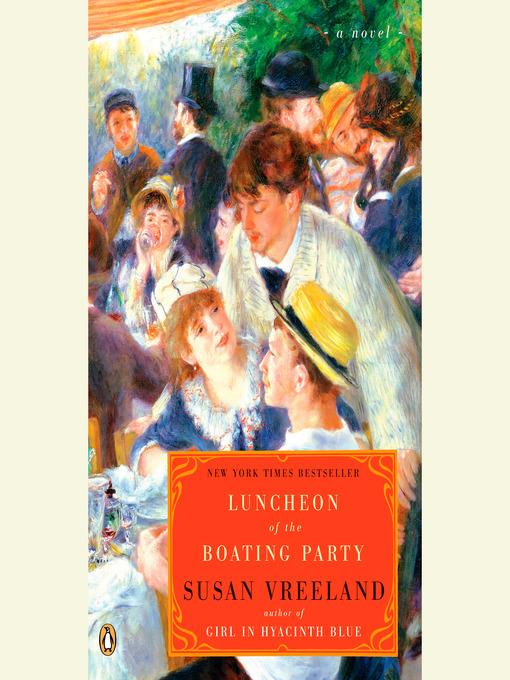
Luncheon of the Boating Party
کتاب های مرتبط
- اطلاعات
- نقد و بررسی
- دیدگاه کاربران
نقد و بررسی

February 19, 2007
Imagining the banks of the Seine in the thick of la vie moderne
, Vreeland (Girl in Hyacinth Blue
) tracks Auguste Renoir as he conceives, plans and paints the 1880 masterpiece that gives her vivid fourth novel its title. Renoir, then 39, pays the rent on his Montmartre garret by painting "overbred society women in their fussy parlors," but, goaded by negative criticism from Émile Zola, he dreams of doing a breakout work. On July 20, the daughter of a resort innkeeper close to Paris suggests that Auguste paint from the restaurant's terrace. The party of 13 subjects Renoir puts together (with difficulty) eventually spends several Sundays drinking and flirting under the spell of the painter's brush. Renoir, who declares, "I only want to paint women I love," falls desperately for his newest models, while trying to win his last subject back from her rich fiancé. But Auguste and his friends only have two months to catch the light he wants and fend off charges that he and his fellow Impressionists see the world "through rose-colored glasses." Vreeland achieves a detailed and surprising group portrait, individualized and immediate.

In the style of her earlier work, GIRL IN HYACINTH BLUE, Vreeland revisits the art world--this time the world of the Impressionists, specifically Pierre-Auguste Renoir. This fictionalized account of one of his most famous works is clever and multifaceted. Karen White's performance is eloquent and sweetly enthusiastic. She pays special attention to the French pronunciations, which are murmured gracefully and without pretension. The narrative has slower moments wherein it seems Vreeland tries too hard to instruct rather than artfully illustrate; regardless, Karen White's reading is pleasant, and the descriptions are vivid and sparkling. This audiobook makes for good entertainment, transporting the listener to France and teaching a little art history at the same time. L.B.F. (c) AudioFile 2007, Portland, Maine

August 15, 2007
Here, Vreeland uses words to paint the changing world of late 19th-century France. After being stung by remarks in an essay written by French novelistÉmile Zola concerning the inadequacies of Impressionism, Pierre-Auguste Renoir is goaded to paint a masterpiece surpassing his Montmartre spectacleBal au Moulin de la Galette, which will finally establish this school as heir to the artistic traditions of France and Italy. He uses models, allowing the listener to experiencela vie moderne, the new modes of living, thinking, and expressing that transformed the social world of the late 19th century into the one we inhabit today. Alphonsine, daughter of the proprietor of La Maison Fournaise, and Angèle, a debauched child of Montmartre, are naturals. The beautiful yet spoiled Circe, fobbed off on Renoir by a jaded Parisian socialite, provokes a crisis when she quits midstream, refusing to be painted in profile. Renoir finds her replacement in Aline, a 19-year-old seamstress he will one day marry. Other models add their own piquancy. Karen White brings a cadenced elegance to her reading that is set off by her irreverent over-the-top voicing of the snobby Circe and the naïve innocence of Aline. Recommended for libraries with a commitment to historical fiction and books about art.-David Faucheux, Louisiana Audio Information & Reading Svc., Lafayette
Copyright 2007 Library Journal, LLC Used with permission.

























دیدگاه کاربران